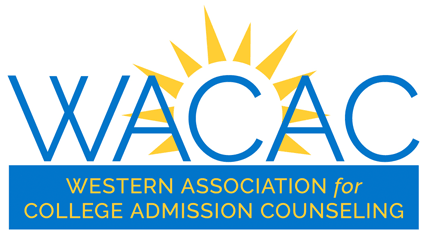I once took a class in which the instructor used what he referred to as the “Jeopardy Method” of grading. Under his system, students earned points for correct test answers, well-written essays, etc., but we could also lose points for poor performance, even on optional extra credit projects. It was nerve-wracking, to say the least, as I approached an extra credit report knowing that the score could either solidify the A I’d earned so far, or drop my grade to a C for class. Since students never really knew what goal they needed to work for at any given time, it’s no surprise that his “Jeopardy Method” left people with a lot of questions and doubts about their status and the fairness of his system.
I sometimes wonder if some universities also believe in some sort of “Jeopardy Method” in managing their transfer admissions criteria.
I should point out that I am a Transfer Center Coordinator, and while I work with Admissions and Outreach personnel at many schools, my perspective is based on advising and advocating in the best interests of my students. Sometimes that means sharing things that are very encouraging to students, and sometimes it means telling them some hard truths about their prospects. Either way, I believe my role is most effective when I have as much definite information as possible, both from the student and from their prospective schools.
Some schools, like many in the University of California (UC) system, are fairly transparent in their methods and provide well-defined admission standards. Of course, the UC’s Transfer Admission Guarantee (TAG) program provides very specific guidelines, but even outside of the TAG program the UC gives transfer students and advisors a pretty clear understanding of what it takes to be competitive. They outline their criteria and processes in advance of the application periods, and they generally stand by their stated policies. Some also share admissions outcomes after the process is complete. UCLA’s excellent “Profile of Admitted Transfer Students” web page includes data for ten-plus years of admissions, including admit rates and average admitted GPAs for each major. Others, like the UC Davis Student Profile page, provide at least some general parameters for recent admissions. Sure, there are variables from year to year and campus to campus, so there are always some surprises when admission decisions are sent, but most students at least have a good idea of the UC campuses where they will be competitive and which schools will be a reach.
On the other hand, many schools don’t share much data from previous years and offer only vague projected criteria for upcoming admission cycles. Some post recommended or required courses, but don’t state minimum GPAs. Some admissions officers have told me that they don’t share past data because they fear students will assume that the numbers will stay the same. Others say they don’t publish minimum requirements because they think students will only work to those minimums. Some even fear that applicants will think that if they meet the minimum they are guaranteed to get in.
Most frustrating of all are schools that actually change previously announced criteria in the middle of an admission cycle, especially when it happens after applications have closed. At that point, students have already committed time and money to their applications, and if they are no longer eligible under the revised criteria they may not have any other alternatives but to wait for the next application period. This is a huge disservice to students and families (and their advisors!), and it is especially hard on those students who are place-bound with limited resources and many non-academic challenges. AB-2402 became law in 2010 to curtail changes to admission criteria in the Cal State system without advance notice, and the CSU’s coded memo # AA-2011-23 details the procedures which the campuses are supposed to follow. But we’ve seen abrupt changes implemented again this year late in the admissions cycle and with no warning, leaving students hanging high and dry.
There seems to be an ongoing debate in higher ed: Should schools publish details about admissions criteria and processes and trust that students and advisors will do the right things with that information, or is it better not to be too specific, allowing for some latitude on the part of the receiving institution? Is it more effective to set policies early and be firm about them, or leave some leeway in the process so schools can adjust to changing circumstances?
In my opinion, these questions have already been answered for us by our students. They’ll use web sites, social media, personal networking, surveillance drones, or maybe even books (gasp!) to find whatever information they can. But in the absence of consistent, detailed information from a reputable source, they’ll also latch on to whatever rumor they find, whether it’s to their benefit or not. And afterward, if things don’t work out, we all know where the fingers will be pointed. So in this day and age, it’s hard to see any benefit for anyone to be less than 100% forthcoming with as much information as possible.
So when I become Emperor of the Known World, college admissions would look like this: Criteria for each year would be published well in advance, and would be binding on students and schools alike. The application evaluation process would be clearly understood by students and schools. And detailed application information and admissions outcomes would be available promptly to all relevant stakeholders. Even as Emperor I might have trouble enforcing this approach for private universities, but it sure seems like the community- and state-funded institutions have an obligation to taxpayers and students to make the admissions picture as clear as possible. There’s enough Jeopardy in life without creating more in higher education.
By Robert Waldren
